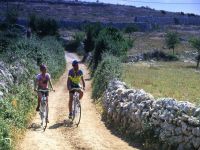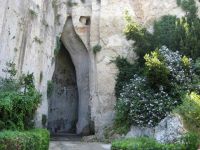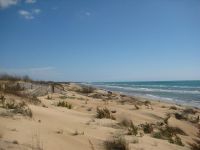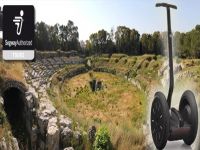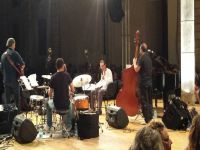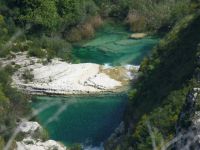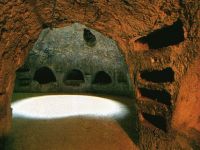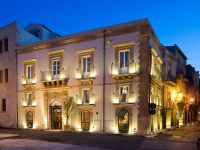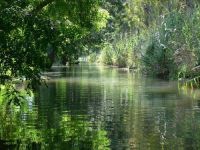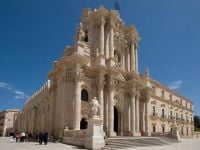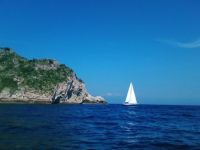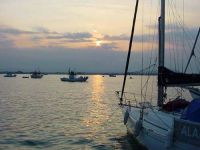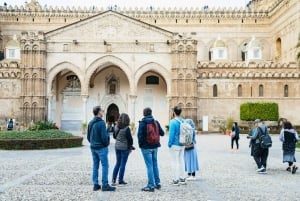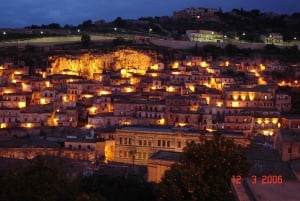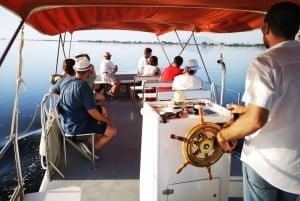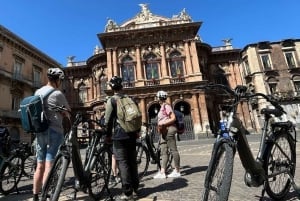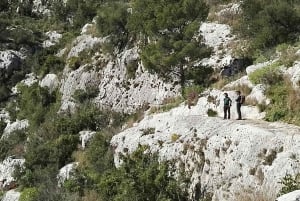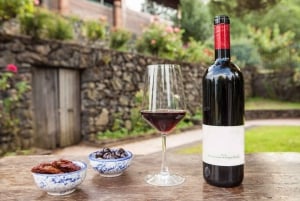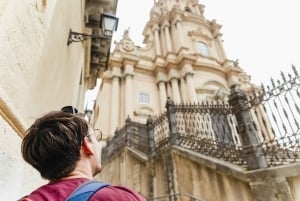Syracuse
According to Cicero, Syracuse was “the greatest Greek city and the most beautiful of them all”. We do not know what the other cities of Magna Graecia looked like, but we sure believe Cicero that Syracuse was the most beautiful one. It is a wonder to behold, as it has some of the finest examples of Baroque architecture and art, a cathedral that is stuff of legend and dramatic Greek and Roman ruins.
The city was founded in 734 BC by Greek colonists from Corinth and soon grew to rival, and even surpass, Athens in splendor and power. It became one of the great ancient capitals of Western civilization, the wealthiest and largest city-state in the West and a bulwark of Greek civilization. Although Syracuse lived under rulers such as the tyrant Dionysius, their courts were filled with Greeks of the highest cultural stature like the dramatists Euripides and Aeschylus, and the philosopher Plato.
Mighty Athens did not welcome the rise of Syracuse and the Athenians set out to conquer Sicily in 413 BC, but the natives outsmarted them in what was one of the greatest military campaigns in ancient history. The city continued to prosper until it was conquered two centuries later by the Romans. Did you know that the ancient gold coins of Syracuse belong to the most beautiful in the world? You can admire them at the Collezione Nusmismatica.
Ancient Syracuse was the most important city of Magna Graecia, home to many great Greeks, including the preeminent mathematician and engineer Archimedes. Syracuse is mentioned in the “Acts of the Apostles”, book 28:12, as Paul stayed here. Ancient writers speak of a population between 500,000 and 1,500.000 inhabitants. Unbelievable, but nowadays Syracuse has only about 120,000.
In 1943 heavy destruction was caused by the Allied and German bombings. Who has not heard of “Operation Husky” – the codename for the Allied invasion of Sicily. Operation Husky was launched on the night of 9/10 July 1943 with British forces attacking the west of Sicily. Syracuse was captured almost unopposed on the first day of the invasion by General Montgomery's Eighth Army. For specially interested visitors: there is a Commonwealth War Graves cemetery west of the town, where about 1.000 men are buried.
Syracuse is listed along with the Necropolis of Pantàlica by UNESCO as a World Heritage Site.
Syracuse is easy to visit in one day, though deserves rather more time. Usually a visit is split into two parts, one dedicated to the archaeological site, the “Parco Archeologico Neapolis”, the other to the historical town centre, the island of Ortygia. The town is known in Sicily for its excellent seafood restaurants.
Things to do and see in Syracuse
The historical centre Ortygia is small, so it’s difficult to get lost. There are so many things to see and do in Ortigia that we dedicated a separate page to this picturesque quarter of Syracuse - please see more at Regional Info - Ortigia
In the mainland section of Syracuse it's worth visiting the Byzantine bathhouse known as Edificio Termale and the ancient Arsenale by Porto Piccolo where ships were refurbished. In Via Elorina you will find the monumental complex of the Roman Gymnasium including a temple, a theatre and a Roman porch. Visible are the first steps of the theatre and parts of the wall of the porch. The orchestra is always filled with water as it is below sea level.
The Archaeological Park Neapolis is an absolute must-see for every Sicily visitor. It includes a Roman amphitheatre, a Greek theatre, a limestone quarry, altars, sanctuaries and the famous “Ear of Dionysius”. The park is connected to the train station by free electric buses and to Ortygia by bus. We highly recommend a visit to the archaeological museum Museo Archeologico Paolo Orsi, which is one of the biggest museums in Italy. Also worth seeing are the Papyrus Museum, the Regional Gallery, and the Tecnoparco Archimede. See more museums here
Catacombe di San Giovanni & Chiesa di San Marciano
Not far from the Archaeological Park, you can explore one of the earliest-known Christian sites in the city - the catacombs below the church of San Giovanni. At the crypt of the San Marciano church Saint Paul preached on his way through Sicily to Rome. The frescoes in this small chapel are mostly bright and fresh, though some dating from the 4th century AC show their age.
Castello Eurialo
The Castle of Euryale which is located some nine kilometres outside the city was built by the tyrant Dionysius the Elder and is supposed to be one of the most powerful fortresses of ancient times. Three moats with a series of underground galleries allowed the defenders to remove the materials the attackers could use to fill them. Castello Eurialo is well worth a visit, here you will get a very good impression of ancient Syracuse and its size and greatness.
Restaurants in Syracuse
Most of Siracusa’s restaurants are located in Ortygia. The town is especially known for its sea food restaurants, but you will also find many small restaurants, bistros and wine bars serving delicious pizza, homemade pasta, couscous, Japanese specialties and local food from the Hyblean Mountains. Numerous grocer and butcher shops, cafés and bars also offer good things, such as Sicilian street food, pastries and ice cream.
Hungry? Then look for some good eateries here
Nightlife in Syracuse
For nightbirds we recommend Ortygia with its pubs, cafés, cocktail and wine bars, music and lounge bars - some of them are housed in historical buildings, some feature gardens.
Why not visit an “Opra dei Pupi” for a start into your night in Syracuse?
See more at our page Ortygia
Accomodation in Syracuse
There is plenty of accommodation in Syracuse, in particular in Ortygia, where you will find in old mansions, palazzos and townhouses uncountable B&Bs and apartments and also beautiful hotels, as well as modern congress and group hotels on the mainland of Syracuse, and club resorts and agriturismos in the town’s surroundings.
Find your home in Syracuse here
Events in Syracuse
The biggest religious festival starts on 13th of December, when Syracuse is celebrating its patron saint Santa Lucia. From May on the Treno del Barocco connects Syracuse to Ragusa. Discover splendid landscapes, Baroque jewels and the locations of the TV serial Commissario Montalbano by train (great for children). In May/June the Greek tragedies are performed in the Greek theatre. The Feste Archimedee offer science, culture, art, cinema and theatre for the “development and enhancement of the youthful genius” (translation of the somehow flowery Italian text) – it is a festival for everybody, but in particular for children. See more festivals in Sicily here
Syracuse surroundings
If you fancy some hiking and biking you should pay a visit to the Natural Reserve Ciane River, the only place in Europe where wild Egyptian papyrus grows. Plenty of birds, plants and fish species live in the river Ciane. You can also explore the river by canoe or boat excursion. There is a small archaeological site in the region, a Greek colony, Megara Hyblaea.
Worth a visit is the beautiful seaside resort Ognina, located a few kilometres from Syracuse. Ognina is overlooking the Mediterranean Sea, with zones of breathtaking unspoiled nature. The diversity of the various parts of the coastline, the beauty of the colours of the sea and the purity of the seabed determine the alluring charm of this little paradise. The crystal clear unpolluted sea is a true paradise for lovers of scuba diving and fishing. Caves and rocky cliffs alternate with bays and coves of white sand.
For beach aficionados
You could go for a swim in Syracuse, but we do not recommend this sporty activity in town or next to it. The water is not very clean. But enjoying sunny days at the beach is possible not far away at Ognina, Fontane Bianche and Arenella, where you will find white sandy beaches and also rocky coasts, perfect for swimming, snorkelling and diving.
Sailing the Med
Yachts can dock in the touristic port of Syracuse - please see more here
How to get to Syracuse
By car
Take the A 18/E45 from Messina (1 h 45 min), Taormina (1 h 15 min) and Catania (50 min), the A 19/E45 from Palermo (2 h 30 min) and Cefalù (2 h10 min), from Agrigento the SS 640 and A 19 (2 h 20 min), from Ragusa and Modica SS 115/A 18 (1 h 20 min), from Noto the A 18 (30 min).
By bus & train
Syracuse is the capital of the province and provides good train and bus (AST, SAIS Linee, Interbus) connections to all major cities in Sicily and within in the province.
From June to October the “Treno del Barocco” (Baroque Train) connects Syracuse to Ragusa.
By ferry
From La Valetta in Malta Virtù Ferries run daily to Pozzallo (1h 45 min), the drive from Pozzallo to Syracuse takes about 50 min.
By airplane
The nearest airport is Catania International Airport "Vincenzo Bellini"


